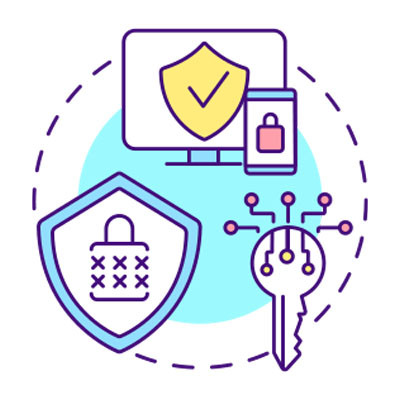JS Business Solutions Blog
When it comes to network security, there are many common suggestions from IT professionals, like utilizing robust firewalls and antivirus measures. However, it’s easy to overlook some of these practices, especially if you are not necessarily a trained IT technician. We’re here to provide a short guide to three of the most common security pitfalls organizations like yours will likely face during normal everyday operations.
Wi-Fi is a huge benefit for everyone so knowing the basics of how your router works is a pretty good idea. For the business, the wireless connection can be a central resource for business productivity and data sharing. We thought it would be useful to give you a little more information about router settings to help you understand your wireless connection a little better.
Microsoft’s Windows 11 operating system has seen pretty positive reviews. In contrast, others just see it as an unnecessary update of the popular Windows 10 offering. Still, regardless of the opinions you come across, there are some pretty major benefits to upgrading. The thing is that Microsoft, like almost any other company, wants you to have an account to interact with their products. Fortunately, for those who, for whatever reason, don’t want to make a Microsoft account, you can update your computer to Windows 11. Today, we will tell you how.
The decision to outsource your company’s IT decisions to a managed service provider is significant, and the importance is not lost on us. After all, you're essentially handing over the keys to your company's assets and resources, and it's crucial to ensure you make the right choice for the future of your business. Fortunately, gauging the suitability of a managed service provider can be made much easier by asking three key questions.
One of the most effective ways to reduce cyber risks is through comprehensive employee cybersecurity training. You protect your organization by ensuring that your workforce has the knowledge and skills needed to identify and thwart potential threats. Here are five essential considerations for implementing successful employee cybersecurity training programs.
If businesses want to stay competitive, they must implement new technology to keep up with other similar organizations in their respective industries. Unfortunately, the downside to implementing new technology is that your employees might not be so understanding and willing to adapt their workplace habits to accommodate your new solutions. How can you overcome this challenge? It all starts with mindset and approach.
With so many new and emerging threats to worry about in today’s cybersecurity landscape, it’s no wonder that some businesses and employees might be operating from a knowledge deficit regarding network security. We’re here to change that with a quick overview of the three biggest overarching threats your business must face and prepare for.
What’s the difference between a power strip and a surge protector? It turns out, quite a lot, and the difference is much more than just the number of plugs on it. Let’s discuss some of the biggest ways that these two important pieces of power supply technology differ and how you should determine which one best suits your needs.
When it comes to getting the most value out of your business’ software infrastructure, it’s hard to argue with Software as a Service (SaaS). In fact, there are many solutions that are fueled by SaaS that power some of the world’s most lucrative companies. Let’s look at some examples of SaaS applications that can help even a small business revolutionize operations to save time and earn more profits simultaneously.
In today’s digital workplace, data backup and disaster recovery are critical components that demand strategic attention. We specialize in providing these services to SMBs, and we recognize the unique challenges that surface on a day-to-day level. Today, we’d like to go into the financial significance of investing in data backup and disaster recovery, with a particular focus on how our services can contribute to your company’s fiscal resilience.
You might wonder how your business can possibly stand up to the countless cybersecurity threats out there, as even with training for your employees, it seems likely that something bad will happen eventually. This defeatist attitude isn’t necessarily productive, and it’s actually one that your team might embody if you don’t frame your training in the right way. Let’s look at some ways you should not bring up cybersecurity training and why you might be inadvertently sinking your successes.
Today’s business world is full of technology, one of which is commonplace now thanks partly to the pandemic: video conferencing. While the trend was on the rise before COVID, it’s seen as a necessity, particularly for businesses with remote teams. It’s important to ensure that you practice good video conferencing etiquette; otherwise, you could suffer from poor—or worse, boring—meetings.
Data security is an ongoing challenge, given the evolving tactics of hackers and scammers. IT administrators face a complex situation as these threats become more sophisticated. Employing security measures such as multi-factor authentication (MFA) or two-factor authentication (2FA) has emerged as an effective means to enhance organizational data protection. In this discussion, we will go into the advantages of this approach while acknowledging its limitations in providing comprehensive security.
Laptops are powerful tools for office productivity, particularly due to their mobile nature. In the workplace, however, more users prefer to have the screen real estate offered by multiple monitors and traditional desktops. You can get more bang for your buck, however, by using a laptop that can work while it’s closed, thereby transforming it into something like a PC tower.
Of all the aspects that play a part in your business’ success, its company culture can often be overlooked as nothing more than a perk… something nice to offer the team, but ultimately unimportant. This is very much a misconception.
Let’s discuss how valuable a positive company culture is, and how to develop one in your business. Don’t worry, we’ll get into the technology of it all, too.
Technology can bring many dynamic benefits to an organization, but it can also derail its successful trajectory. One of the significant considerations that must be made is whether the technology your organization is implementing fits your business needs. Today, we will describe how having a knowledgeable perspective can help you avoid making investments that may not produce the rapid returns that most small businesses require.
When a business goes into action to improve itself, it typically goes into the process thinking that whatever changes it makes can significantly affect how it functions. Unfortunately, this isn’t always the case. Today, we’ll discuss how professional consultants provide a perspective that can revolutionize how your business operates.
Are you familiar with the works of Isaac Asimov? The author wrote a short story called “Runaround” in 1942, and it introduced the idea of the Three Laws of Robotics, or laws that all of the robots in his Robots series must follow. This stranger-than-reality concept is being used today by Google, which has announced a set of safeguards partially inspired by these three laws to help it control future AI-powered machines.






















